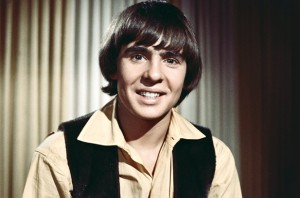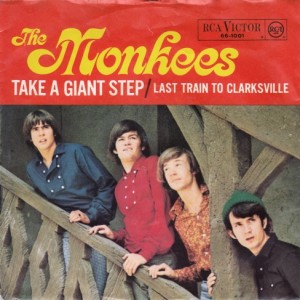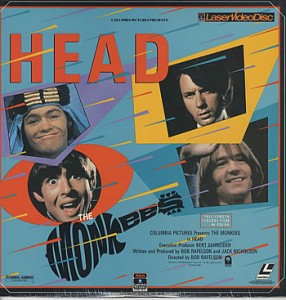 Davy Jones, the diminutive “cute one” of The Monkees, has died. He was 66.
Davy Jones, the diminutive “cute one” of The Monkees, has died. He was 66.
There was a time in the mid-’60s, roughly following the releases of “Rubber Soul” and “Pet Sounds,” when the rock audience grew up. Or, at least, we thought we had. In any event, we became rock-snobs and started looking down our collective noses at what just a year or two earlier would’ve been considered great pop records.
Take “Last Train to Clarksville,” for example. The debut single by The Monkees, “Clarksville” was a well-written and produced song, its guitar riffs and harmonies tailored from some of the same threads and fabrics used in weaving the most recent Beatles singles.
But in those few months before I turned 16, I already considered myself a sophisticated arbiter of rock-taste, and while my girlfriend was enthralled with the new band, I derided The Monkees as a “Bubblegum band” and called their records “Pimple Rock” (never mind that I was using Clearasil twice a day!).
 In those days, it was popular for the rock snobs among us to refer to The Monkees as the “Pre-Fab Four” — a TV producer’s wet dream creation that that was obviously beholden to The Beatles’ music and films — and we disdained the PreFab Four for not playing their own instruments and not writing their own songs.
In those days, it was popular for the rock snobs among us to refer to The Monkees as the “Pre-Fab Four” — a TV producer’s wet dream creation that that was obviously beholden to The Beatles’ music and films — and we disdained the PreFab Four for not playing their own instruments and not writing their own songs.
But in the end, my girlfriend had the last laugh.
It took a few years until I realized how ignorant some of my criticisms had been. After all, with the exception of a few exceptionally talented bands, almost all pop artists of the day relied on songs written by a coterie of prolific songwriters that included, among others, Carole King & Gerry Goffin, Neil Diamond, Boyce & Hart, and Barry Mann & Cynthia Weil — the same writers who were crafting hit songs for The Monkees. Likewise, most record producers of the time utilized session musicians to provide the backing tracks for hundreds of hit singles of the Sixties; in fact, one particularly excellent group of session musicians who called themselves The Wrecking Crew had provided most of the tracks for Brian Wilson‘s groundbreaking “Pet Sounds.”
And another talented group of session players, The Candy Store Prophets, were the mystery band behind The Monkees early records.
Thus, it was no mystery, either, why those Monkees records are so good. Pre-fabricated or not, they are the result of some of the best songwriters, producers, and session musicians working in a time when rock-inspired pop music was in a Golden Era.
 But not to give short shrift to the individuals in the Monkees themselves. Though they strained at the confines placed on them by their TV and record company Masters, each Monkee himself was a charismatic and talented fellow in his in own right, and the group’s self-effacing chemistry together made no small contribution to their success.
But not to give short shrift to the individuals in the Monkees themselves. Though they strained at the confines placed on them by their TV and record company Masters, each Monkee himself was a charismatic and talented fellow in his in own right, and the group’s self-effacing chemistry together made no small contribution to their success.
And in the middle of a group where each played a Beatlesque role of the Funny One, the Brainy One, or the Quiet One, there was Davy Jones – the Cute One, who’d already had a successful music theater career in England before becoming a Monkee. Davy had a good voice, a natural charm, good performing instincts, and he was good-natured when the butt of short-people jokes.
And, damn it!, he really was Cute!
What red-blooded American girl could fail to be charmed?
But maybe that was the real reason I was so initially bitter about the Monkees? – that now I had to contend not only with Paul McCartney, but also with Davy Jones for the affections of my girlfriend?
Nonetheless, I finally was won over, too. Not only by the fabulous music of The Monkees but also by the personalities of its members, not least Davy.
Davy Jones has died. And though I came to it late, he gave me much joy. And he is too young to have died. Rest in peace, Davy. And, if you can find it in your heart, forgive my earlier disdain.
– Rich Horton, The Pallid Pilgrim
Here are some excellent vintage photos of the Monkees, By Holly Homan
http://www.youtube.com/watch?v=NE4YBt3Zfvs


